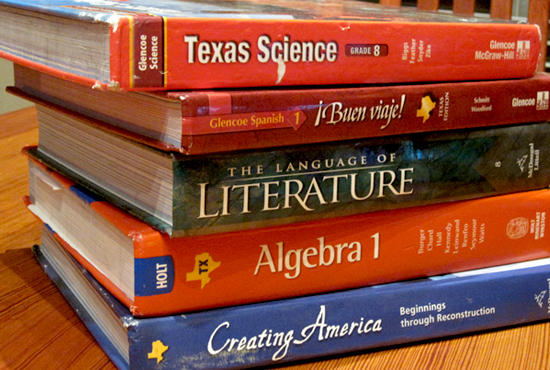
Dear Commons Community,
The New York Times has a featured article this morning entitled, Two States. Eight Textbooks. Two American Stories. It highlights the differences – some extensive and some subtle – in the American history textbooks used in California and Texas. Here is an excerpt:
“We analyzed some of the most popular social studies textbooks used in California and Texas. Here’s how political divides shape what students learn about the nation’s history.
The textbooks cover the same sweeping story, from the brutality of slavery to the struggle for civil rights. The self-evident truths of the founding documents to the waves of immigration that reshaped the nation.
The books have the same publisher. They credit the same authors. But they are customized for students in different states, and their contents sometimes diverge in ways that reflect the nation’s deepest partisan divides.
Hundreds of differences emerged in a New York Times analysis of eight commonly used American history textbooks in California and Texas, two of the nation’s largest markets.
In a country that cannot come to a consensus on fundamental questions — how restricted capitalism should be, whether immigrants are a burden or a boon, to what extent the legacy of slavery continues to shape American life — textbook publishers are caught in the middle. On these questions and others, classroom materials are not only shaded by politics, but are also helping to shape a generation of future voters.
Conservatives have fought for schools to promote patriotism, highlight the influence of Christianity and celebrate the founding fathers. In a September speech, President Trump warned against a “radical left” that wants to “erase American history, crush religious liberty, indoctrinate our students with left-wing ideology.”
The left has pushed for students to encounter history more from the ground up than from the top down, with a focus on the experiences of marginalized groups such as enslaved people, women and Native Americans.
The books The Times analyzed were published in 2016 or later and have been widely adopted for eighth and 11th graders, though publishers declined to share sales figures. Each text has editions for Texas and California, among other states, customized to satisfy policymakers with different priorities.
“At the end of the day, it’s a political process,” said Jesús F. de la Teja, an emeritus professor of history at Texas State University who has worked for the state of Texas and for publishers in reviewing standards and textbooks.
The differences between state editions can be traced back to several sources: state social studies standards; state laws; and feedback from panels of appointees that huddle, in Sacramento and Austin hotel conference rooms, to review drafts.
Requests from textbook review panels, submitted in painstaking detail to publishers, show the sometimes granular ways that ideology can influence the writing of history.
A California panel asked the publisher McGraw-Hill to avoid the use of the word “massacre” when describing 19th-century Native American attacks on white people. A Texas panel asked Pearson to point out the number of clergy who signed the Declaration of Independence, and to state that the nation’s founders were inspired by the Protestant Great Awakening.
All the members of the California panel were educators selected by the State Board of Education, whose members were appointed by former Gov. Jerry Brown, a Democrat. The Texas panel, appointed by the Republican-dominated State Board of Education, was made up of educators, parents, business representatives and a Christian pastor and politician.
McGraw-Hill, the publisher whose annotated Bill of Rights appears differently in the two states, said it had created the additional wording on the Second Amendment and gun control for the California textbook. A national version of the pages is similar to the Texas edition, which does not call attention to gun rights, the company said in a written statement.
Pearson, the publisher whose Texas textbook raises questions about the quality of Harlem Renaissance literature, said such language “adds more depth and nuance.”
Critical language about nonwhite cultural movements also appears in a Texas book from McGraw-Hill. It is partly a result of debates, in 2010, between conservative and liberal members of the Texas Board of Education over whether state standards should mention cultural movements like hip-hop and country music. Their compromise was to ask teachers and textbook publishers to address “both the positive and negative impacts” of artistic movements.
Texas struck that requirement in 2018, but its most recent textbooks, published in 2016, will reflect it for years to come.”
Insightful article!
Tony


